Armored recovery vehicle BREM-80U
The project of a promising repair and recovery vehicle with enhanced characteristics started at the very beginning of 1997. Omsk Transport Engineering Design Bureau received the task to develop a promising BREM based on one of the existing tanks. The tank T-80U was proposed as the basis for the vehicle, as a result of which the project received the designation BREM-80U. Designers were required to develop a BREM with the highest possible characteristics, superior to the existing equipment of this class. It was necessary to maintain the highest possible unification with the base tank, which was to simplify the manufacture and operation of new BREM.
Omsk engineers had to face a number of problems, one of which was the timing. About half a year was devoted to the development of the project and the construction of the prototype machine. It was assumed that the first prototype will be ready for the exhibition VTTV-97, where it will be shown to potential customers. Also, the work was complicated by several noticeable changes to the technical specifications that occurred during the development, as well as the technical features of the domestic armored vehicles. In particular, some difficulties were associated with a small amount of space reserved for the tanks of the Soviet and Russian development.
Nevertheless, despite all the problems, KBTM specialists successfully completed the task as soon as possible. To do this, however, had to force work. On carrying out separate stages of the project, such as outline design, etc. It took only a few weeks. As a result of all the work, the enterprise-developer managed to fulfill the customer's requirements and build a prototype of the promising BREM-80U. As tests showed later, in some parameters the machine not only fulfilled, but also surpassed the requirements of the technical specifications.
The main objective of the project BREM-80U was to ensure the superiority of the new machine over the existing technology. Thus, a promising repair and recovery vehicle was supposed to be a direct analogue of the existing BREM-1 with a similar composition of equipment, but differ from it in increased characteristics. This task was solved through the use of new conceptual and technical solutions.
According to the overall appearance and composition of the special equipment, BREM-80 and BREM-1 are almost the same. The machine on the basis of the T-80U tank, like its predecessor, has the ability to pull out stuck armored vehicles and tow to the place of repair. There is also the possibility of direct participation in various repairs, including those associated with the lifting and transporting of large and relatively heavy loads. In addition, it provides for the possibility of some earthworks and minor repairs of armored vehicles without outside assistance.
The existing main tank was taken as the basis for the new BREM, which affected a number of its features. Thus, the power plant and the undercarriage of the T-80U tank did not undergo any noticeable changes. The armored body, in turn, has undergone the most serious improvements related to the installation of a set of new equipment. It is noteworthy that after all the modifications BREM-80U weighs about the same as the base tank. Combat weight of both armored vehicles is at the level of 46 t.
To accommodate all the necessary special equipment, KBTM designers had to change the design of the hull of the base machine. It was increased with the help of a special superstructure-cabin, starting from an enlarged frontal sheet and ending in front of the engine-transmission compartment. At the same time, the superstructure is asymmetric: its right side is box-shaped, while on the left side there is a step to accommodate the crane.
On the fences and shelves a new project provides two sets of boxes for storing and transporting various tools, spare parts, etc. On the right side, such equipment passes to the stern, almost without changing the dimensions and shape. The boxes of the left side, in turn, are designed with consideration of the design features of the crane’s boom. Another place to accommodate a large cargo is provided behind the superstructure.
According to reports, after such modifications, the frontal part of the body retains a combined barrier, additionally equipped with built-in dynamic protection. Due to this, the frontal projection of the BREM-80U is protected from various guns, and the sides and feed provide protection from small-caliber artillery. The machine maintains a protection system against weapons mass destruction and automatic fire equipment.
Inside the superstructure, the crew and part of the special equipment are located, primarily two winches for pulling machinery. The aft part of the hull, as in the base tank, is given under the power plant. The basis of the power plant is a gas turbine engine GTD-1250 with power up to 1250 HP. With the help of a mechanical transmission with a hydraulic control system, torque is transmitted to the driving wheels of the aft location.
Chassis BRAM-80U borrowed from the tank T-80U without any changes. It consists of six road wheels with a torsion bar and additional shock absorbers on some pairs. Caterpillar metal, with rubber-metal hinge. Installation of asphalt shoes is envisaged.
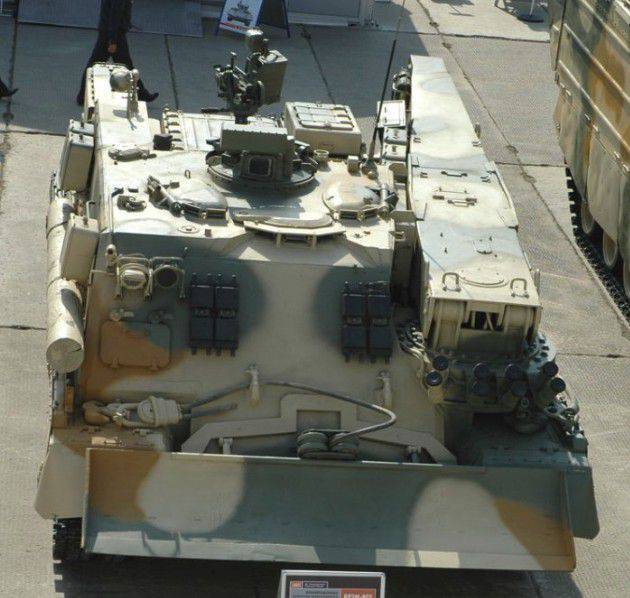
Front view from above. Photo Kollekstiya.ru
The crew of the BREM-80U consists of four people: a driver, a commander, a system specialist and a scaffold. Also in the superstructure provides the fifth place, which can accommodate an additional specialist repairman. If necessary, this place can be used to evacuate the crew of a damaged car. Crew jobs are equipped with their own hatches and periscopic viewing devices. At night, the driver must use a TVN-5 night-vision device, and the commander’s workplace is equipped with a TKN-4C combined optical-optical device with two-plane stabilization.
BREM-80U has a set of weapons for self-defense. On the commander's hatch mounted heavy machine gun NSV-12,7. On the front sheet, at the left side, an installation with eight smoke grenade launchers is envisaged. In addition, the crew has several machine guns, hand grenades, a flare gun, etc.
For pulling or towing damaged armored vehicles, a new repair and recovery vehicle had to use a high-power traction winch located inside the wheelhouse. BREM-80U received a new traction winch with hydraulic drive, which differs from its predecessors more power. An aggregate with traction and winding drums is capable of developing an effort up to 35 ton-force, which with the help of a chain hoist can be increased to 140 ton-force. An important difference from the BREM-1 winch is the speed of issuing the cable increased to 50 m / min, as well as the ability to change the winding speed. The latter may be 16 or 50 m / min. The traction winch cable 150 m working length is issued through a window in the front hull plate and passes through a pair of special rollers.
A hydraulically driven auxiliary winch is provided to develop tractive effort up to 1 tf. It is equipped with a cable length 330 m and is capable of winding it at speeds up to 60 m / min.
On the frontal part of the body, fastenings are provided for a coulter-bulldozer 3,3 m wide with the possibility of digging up to 450 mm. This device is controlled by two hydraulic cylinders and is intended for excavation and holding the machine in place during some other operations. So, it is the coulter that has to stabilize the position of the machine when using a traction winch and a crane.
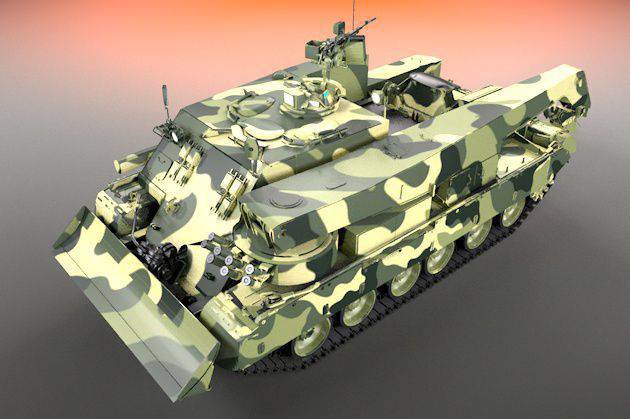
General view of the car. Figure Transmash-omsk.ru
On the ledge of the superstructure of the left side there is a supporting and rotating device of a crane equipped with a hydraulic actuator. On it is pivotally attached boom with two hydraulic cylinders for lifting. The design of the crane allows you to rotate the boom in any direction. Lifting of the load is provided when the boom extends from 2,1 to 4,7. The lifting height (by hook) is 3,6-6 m. The normal lifting capacity of the crane is 18 ton-force. With the help of a chain hoist it is possible to increase this parameter to 25 hardware.
The existing characteristics of the crane allow the BREM-80U to perform various lifting operations and participate in the repair of armored vehicles. Crane lifting capacity makes it possible to change power plants and dismantle tank turrets. In this case, the machine is able to move around the site with a load on the hook.
In the stern of the hull fixed towing device, similar to the previously used. It consists of two pivotally connected rods with internal shock absorption. With the help of this device, the BREM-80U is able to tow all domestic main tanks and other equipment of the same weight category.
Special equipment designed for carrying out small repairs of armored vehicles in field conditions is housed in several case boxes, as well as on a special cargo platform. Behind the central part of the deckhouse there is a place to place spares, etc. payload. Up to 1,5 tons of cargo can be transported on this platform. BREM-80U bears a set of various tools, spare parts, etc. Provides its own electric welding machine.
The armored repair and recovery vehicle based on the T-80U tank has similar dimensions and weight to it. The total length of the machine is 7,8 m, width (on-board screens) - 3,57 m, height (on the roof) - 2,57 m. The total weight of the machine with the maximum load on the platform reaches 46 t. This, in particular, managed to maintain a high specific power ( about 27l.s. per ton) and good mobility.
High power density allows to reach the speed on the highway to 70 km / h. On dry dirt roads the average speed does not exceed 40-45 km / h. Cruising on a dirt road is declared at the level of 500 km. If necessary, long-term work on pulling, towing or repairing equipment, this parameter is reduced accordingly. It is possible to overcome water obstacles to a depth of 1,8 m without any prior preparation. With equipment for underwater driving, the allowable depth of the reservoir is increased to 5 m.
In accordance with the initial task of January 1997, the prototype of the promising BREM-80U was supposed to leave the assembly hall by the beginning of the exhibition HTTV-97. At the cost of certain efforts, Omsk specialists managed to successfully solve all the existing problems and present a prototype of a new special machine in a timely manner. Thanks to this, the first demonstration of the new domestic development was carried out as scheduled, without any delays.
Shortly after the first demonstration of the BREM-80U, information appeared on the existence of an export version of the project. From the basic version, intended for the armed forces of Russia, he differed in some changes in the design of the hull, power plant, etc. Thus, the body of an export repair and recovery vehicle was proposed to be completely made of metal and not equipped with metal-polymer blocks provided for by the basic project. The possibility of using the built-in dynamic protection was not provided. In addition, the export machines had to be equipped with an additional gas turbine power unit, and the power plant provided power take-off systems for the additional pump unit.
Within the framework of the BREM-80U project, KBTM specialists managed to solve several important problems, and also to give this machine high performance. According to the parameters of the traction winch and crane, the machine based on the T-80U surpasses the existing frontal BREM-1 and, as a result, can more effectively solve all the evacuation and repair tasks. To demonstrate the great possibilities of the machine and the superiority over the existing technology, the organization-developer resorted to spectacular displays. Thus, the characteristics of the traction winch were demonstrated by simultaneously towing three heavy armored vehicles on the ground. The speed of their movement was not high, but they still moved in the direction of the repair and recovery vehicle.
High performance, well mastered in the troops of the chassis and some other characteristics of the project BREM-80U allowed to hope that such equipment will interest the armed forces. However, such machines have not yet become the subject of a supply contract. For certain reasons, the Ministry of Defense of Russia has not shown interest in such equipment. Probably, the plans for the future of the T-80 family of tanks affected the decision. Most of this armored vehicles have already been decommissioned for one reason or another, which is why the purchase of repair and recovery vehicles unified with it does not make sense.
Information on contracts for the supply of BREM-80U to third countries is also not available. This is probably due to the relatively small number of T-80 family tanks delivered to foreign countries. As a result, they do not need unified BREM, even with high performance.
The prototype (or prototypes) BREM-80U are regularly demonstrated at various exhibitions of weapons and military equipment, but lately they have only played the role of extras, complementing newer and more promising machines. The Russian military and foreign armed forces did not show interest in this car, which is why its chances of becoming the subject of a contract raise great doubts. Apparently, she still can not take its place in the repair units of the army.
On the materials of the sites:
http://transmash-omsk.ru/
http://gurkhan.blogspot.ru/
http://bastion-opk.ru/
http://armoredgun.org/
http://rus-guns.com/
http://kollektsiya.ru/
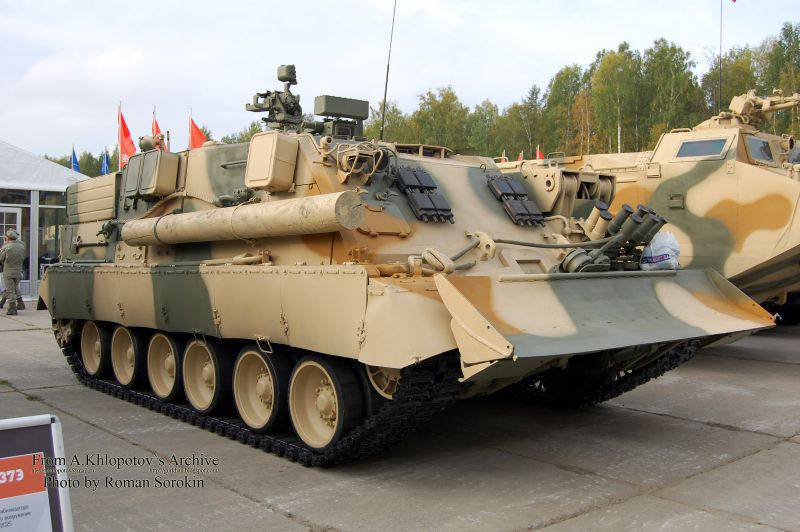
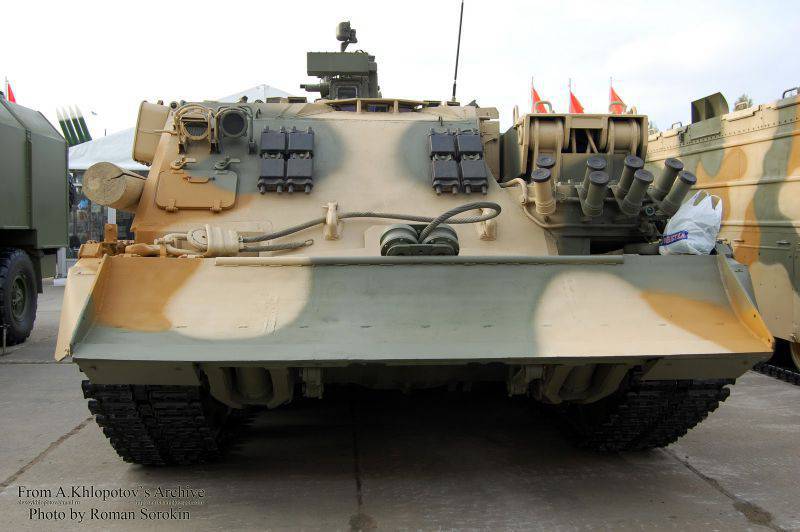
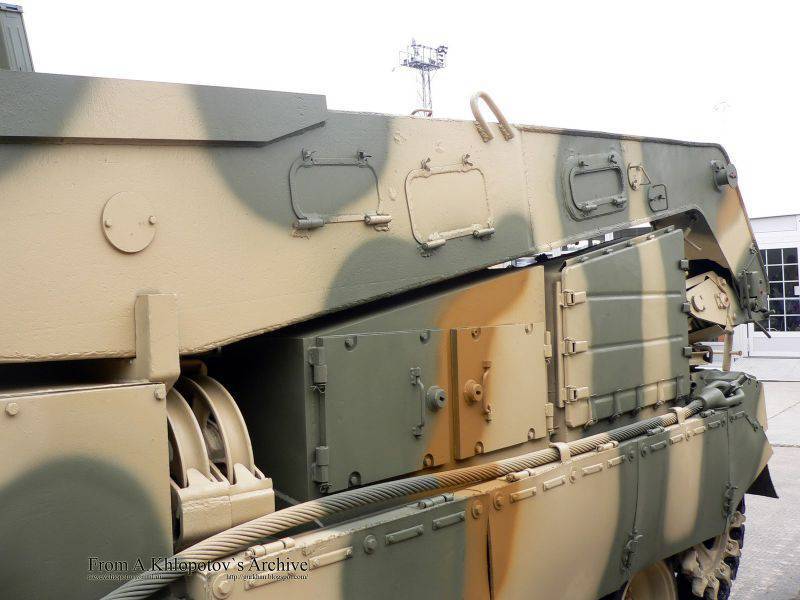
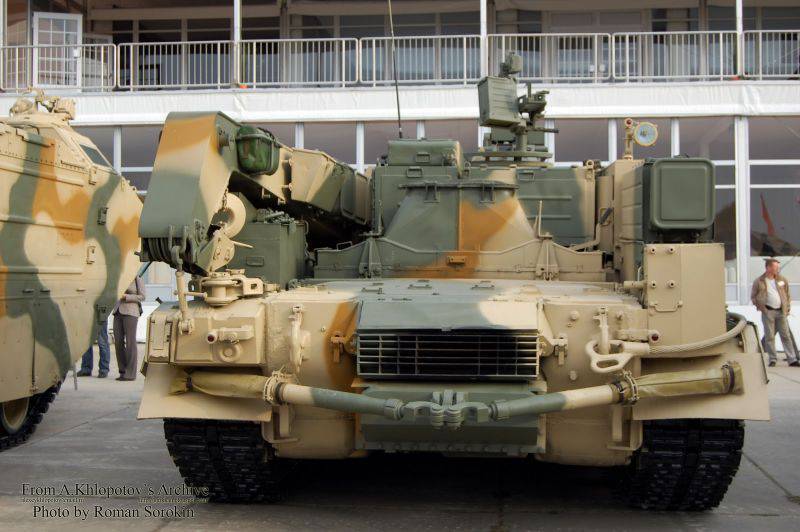
Information